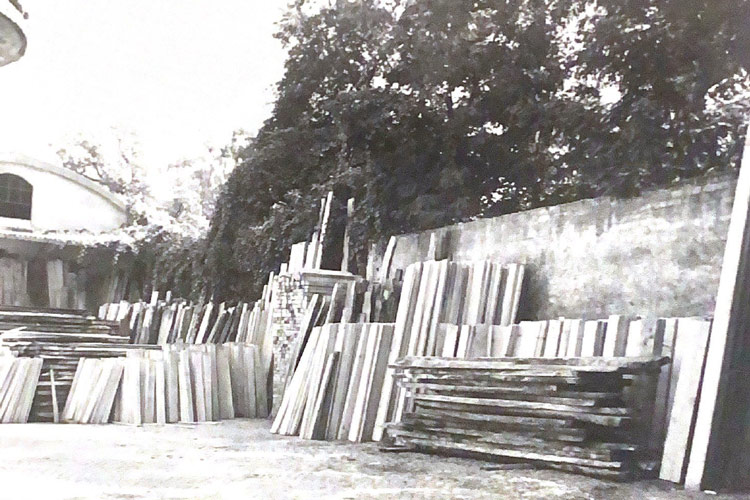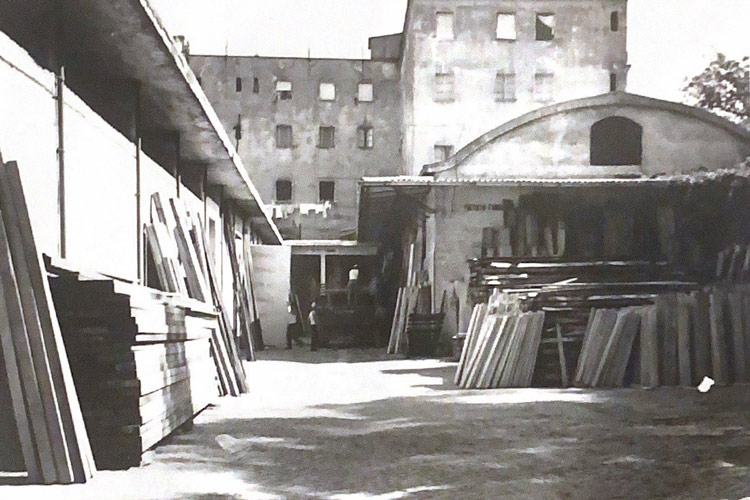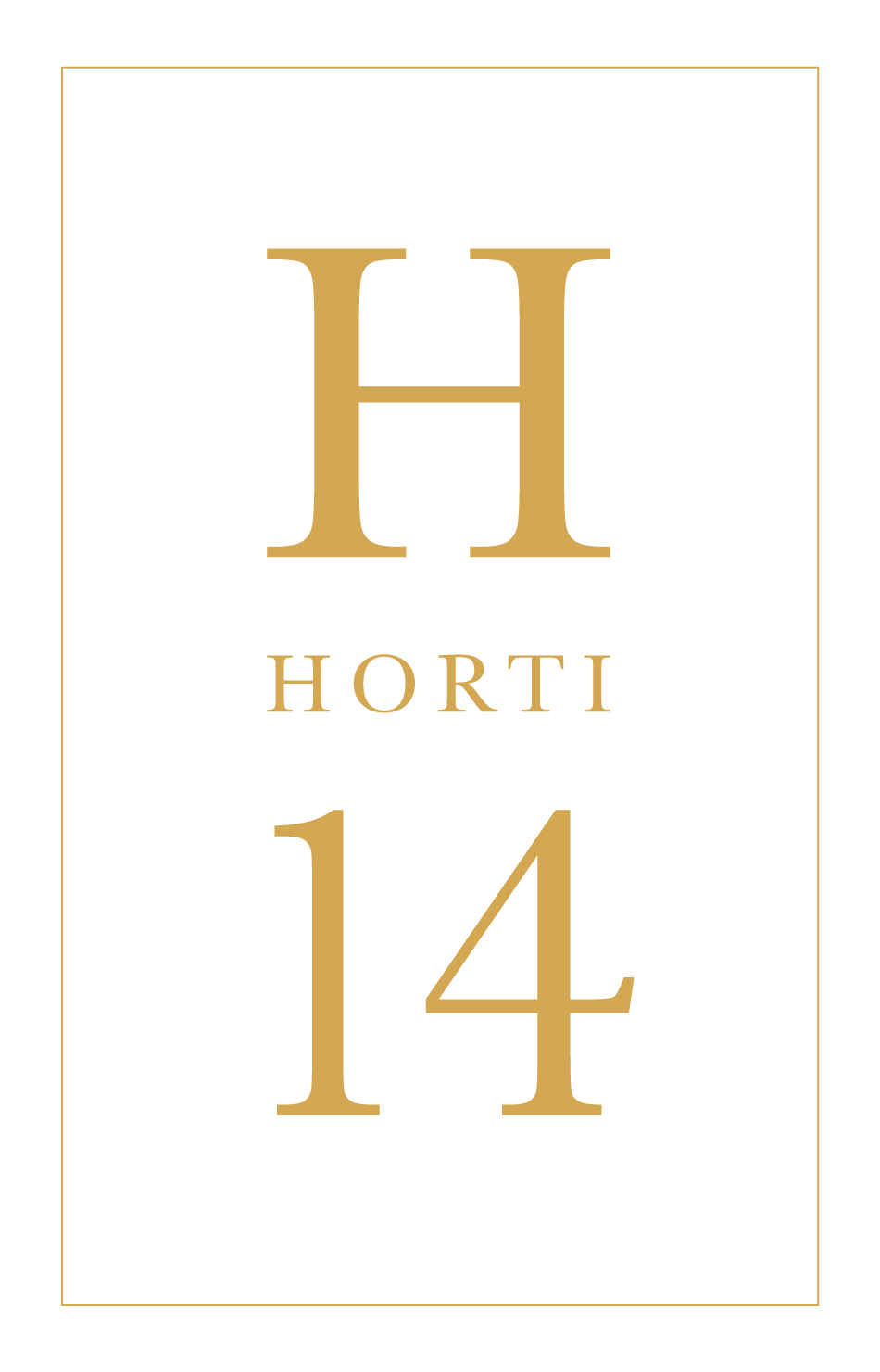
Design & Concept
We strive to connect with nature to celebrate it.
As a flow between inside and outside to break the barriers and blur the lines between the two.
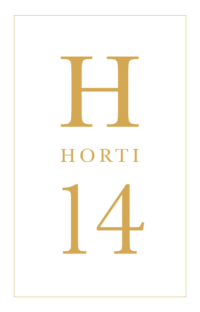
Design & Concept
We strive to connect with nature to celebrate it.As a flow between inside and outside to break the barriers and blur the lines between the two.
The project is the result of an experiment by the Stabili Architetti studio in Rome, using four core materials:
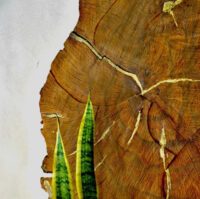
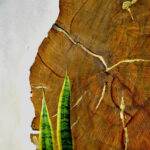
WOOD
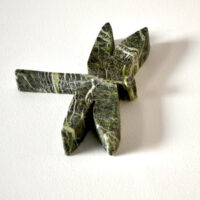
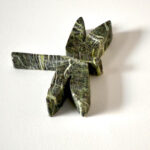
MARBLE
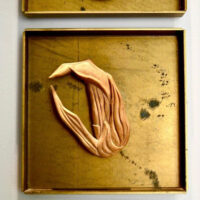
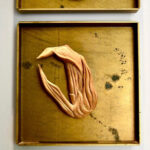
BRASS
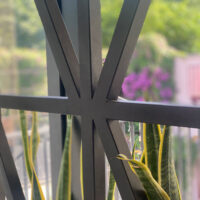
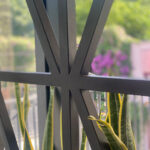
IRON
Each material is used in its pure form, because it wants to be and remain itself.
In an age when ceramics are designed to look like wood or marble, our focus has been to express the materials as they are.
This is all highlighted by the minimalist design of the cement-based resin flooring and the pure lime color of the exteriors.
The products chosen are all Italian design and craftsmanship: Serafini for lighting, Alimonti for marbles, Seam of Antonacci for boiseries and wooden furniture, and Saba Arredamenti of Milan for armchairs and sofas.
The brass elements were individually handcrafted by the artisan Di Cola, using a single casting method.
Each brass handle is shaped like a leaf from a plant, distinct from the others, inspired by wooden models on display in the reception area and cast in brass using the lost-wax casting method. Similarly, the bathroom handles are made to resemble brass branches, symbolizing the strong botanical inspiration behind the structure.
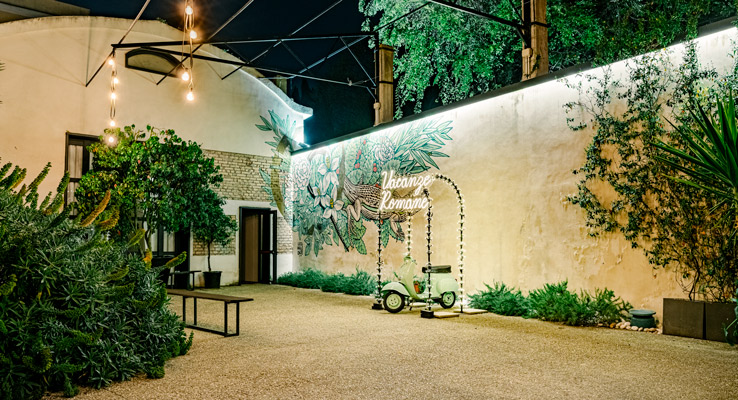
The Botanical Garden of Rome is brought to life through the boundary wall, which is painted by Lucamaleonte, contemporary artist who has worked with Stan and Lex and is among the few Italian artists called by Banksy to paint at his famous Cans Festival in 2008. The mural features plants, flowers, a lizard, and one of Lucamaleonte’s signature geometric figures.
The artist also painted a plant and its geometric element on a wall in each room.
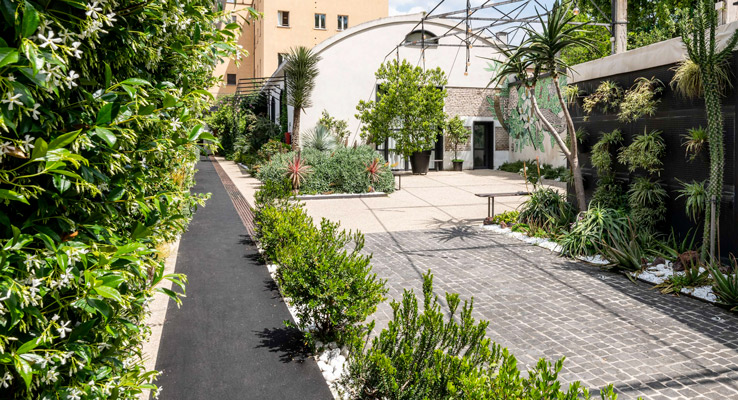
The structure is also unusual, as it is located on the ground floor, slightly elevated.
Each room is accessed from the outside, through the private garden of HORTI 14.
The structure is beautifully lit at night, with hundreds of lights hanging from the structure and LED strips artfully placed. This gives the structure a traditional Trastevere feel, perfectly capturing the genius loci of that unique part of Rome.
Discover our rooftop
Our Botanical Rooftop is ideal for party. It offers a bar corner and can accommodate up to 100 people outside on lounge sofas or up to 60 people inside with a magnificent view of the Botanical Garden of Rome.
Despite the outdoor capacity, we recommend our Rooftop for events of up to 60 people, to ensure a good back-up plan in case of bad weather.
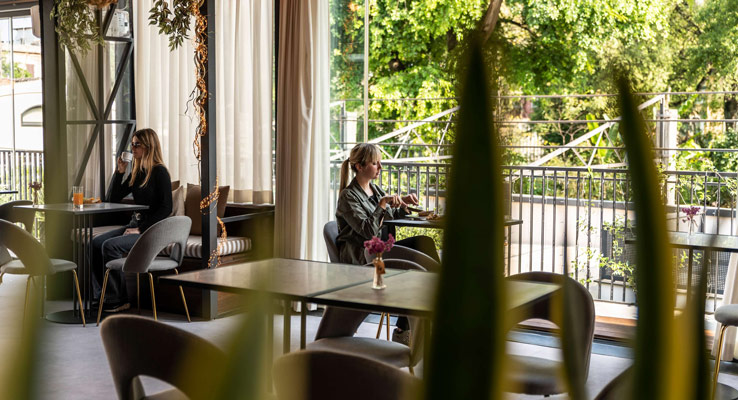
Our rooftop is 7535 square feet in size, overlooks the Botanical Garden of Rome, and is divided into four sections that can be configured in different ways:
- The first section is adjacent to the bar and breakfast room. It has marble and iron tables and wooden sofas with comfortable cushions.
- The second section has a large wooden platform on which four lounges with comfortable cushions are placed.
- The third section has a wooden platform that can be transformed into a social area with three large tables.
- The fourth section has a solarium, gym, and other amenities.
Finally, to highlight the versatility of HORTI 14, the old veneer warehouse was renovated and transformed into “la Serra”: a 1.300 square foot structure, 23 to 33 feet high, with 5 double-level suites with views of the Botanical Garden of Rome and a 350 square foot conference room suitable for meetings, work meetings, team building, and for the entire Mice sector.
Our History
HORTI 14 is located in a hidden corner of the historic center of Rome, in the Trastevere district at Via di San Francesco di Sales 14.
The structure borders the entire southern side with the Botanical Garden of Rome, a 12-acre park that gives it an exclusive location in the green and silence of nature, despite its central location in the city.
HORTI 14 is located at the base of the Gianicolo Hill, 328 feet from the Tiber River, Palazzo Corsini, and Villa Farnesina, and 1.640 feet from Piazza San Pietro, Piazza Farnese, and the lively Piazza Trilussa.
In Roman Imperial age, these lands on the right bank of the Tiber were used as horti by the emperors and the most prominent families of Rome and were therefore cultivated as gardens and rest residences (Horti di Cesare, Horti di Nerone, Horti di Agrippina, Horti di Settimio Severo, etc.)
In particular, the land on which HORTI 14 stands, during the reign of Settimio Severo, was donated by the emperor to his son Geta, who was also Emperor of Rome for a short time, from whom it took the name of “Horti di Geta”.
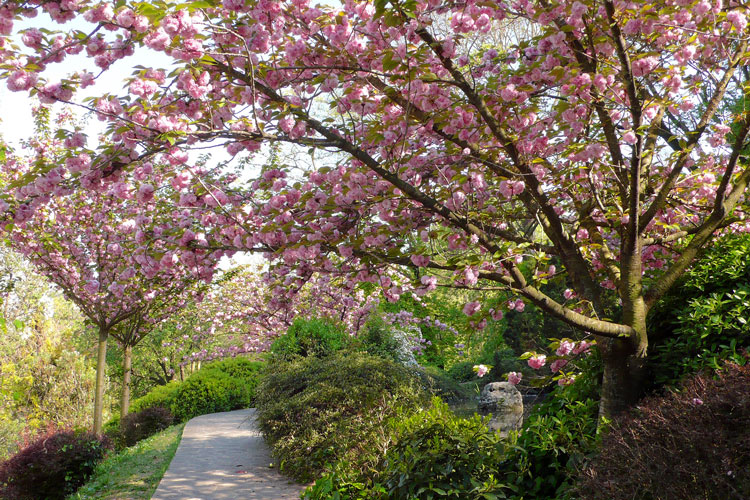
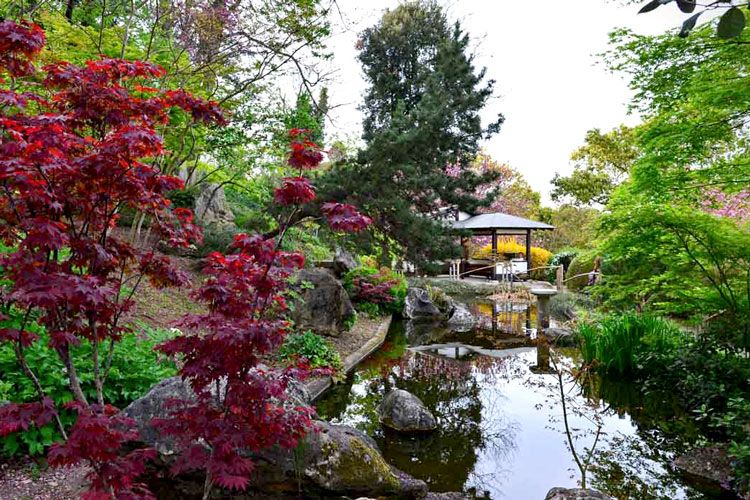
Near HORTI 14 you can admire the magnificent Palazzo Corsini, commissioned by the Riario family to the famous architect Ferdinando Fuga (who designed the Palazzo del Quirinale) and subsequently purchased by Cardinal Neri Maria Corsini, nephew of Pope Clemente XII.
At the end of the 1700s, this property was chosen as the residence of Queen Christina of Sweden, after she converted to Christianity and abdicated the Swedish throne. In these places, Christina founded the Academy of Arcadia, the most prestigious enlightenment cultural movement in Europe, which initiated European Rationalism. The Academy was frequented by intellectuals and scientists, European royalty, the Pope, and other prominent figures of the time.
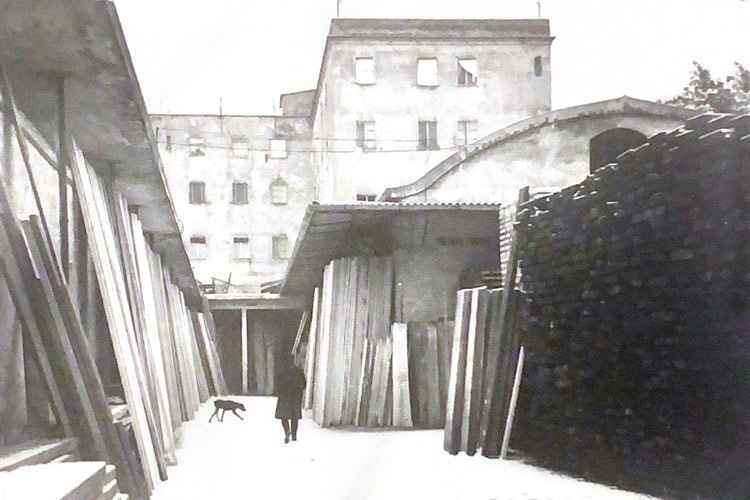
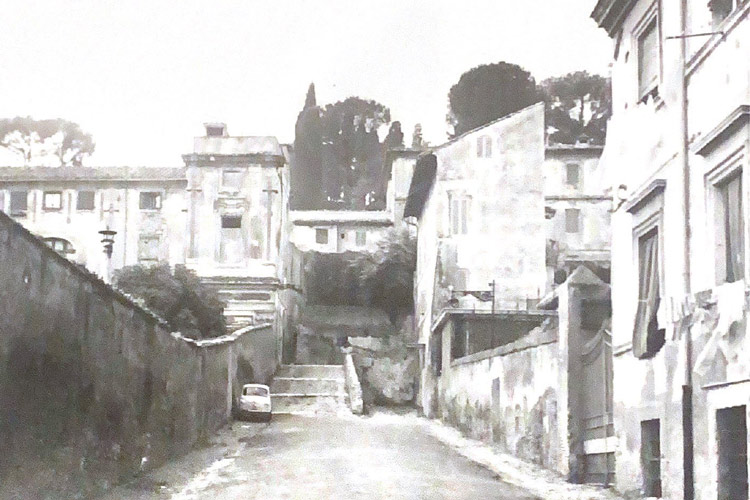
The buildings that make HORTI 14 were purchased by Vannini Legnami, the ancestors of the current owners, in 1925. They were used as an industrial plant for the import, storage, and trade of timber and derivatives until 1974.
For logistical reasons, the activity was moved to the 13th kilometer of the Aurelia road. The complex was then rented by Vannini to the ORT, the Jewish school of Rome, as an extension of the existing classrooms.
Between the 1980s and the 1990s, it was rented to the Roman Avant-garde Theater movement led by Simone Carella.
The buildings were left in a state of abandonment between 2000 and 2016. Vannini recovered them and restored them to their former glory in 2018 with the construction of HORTI 14 Urban Resort.
